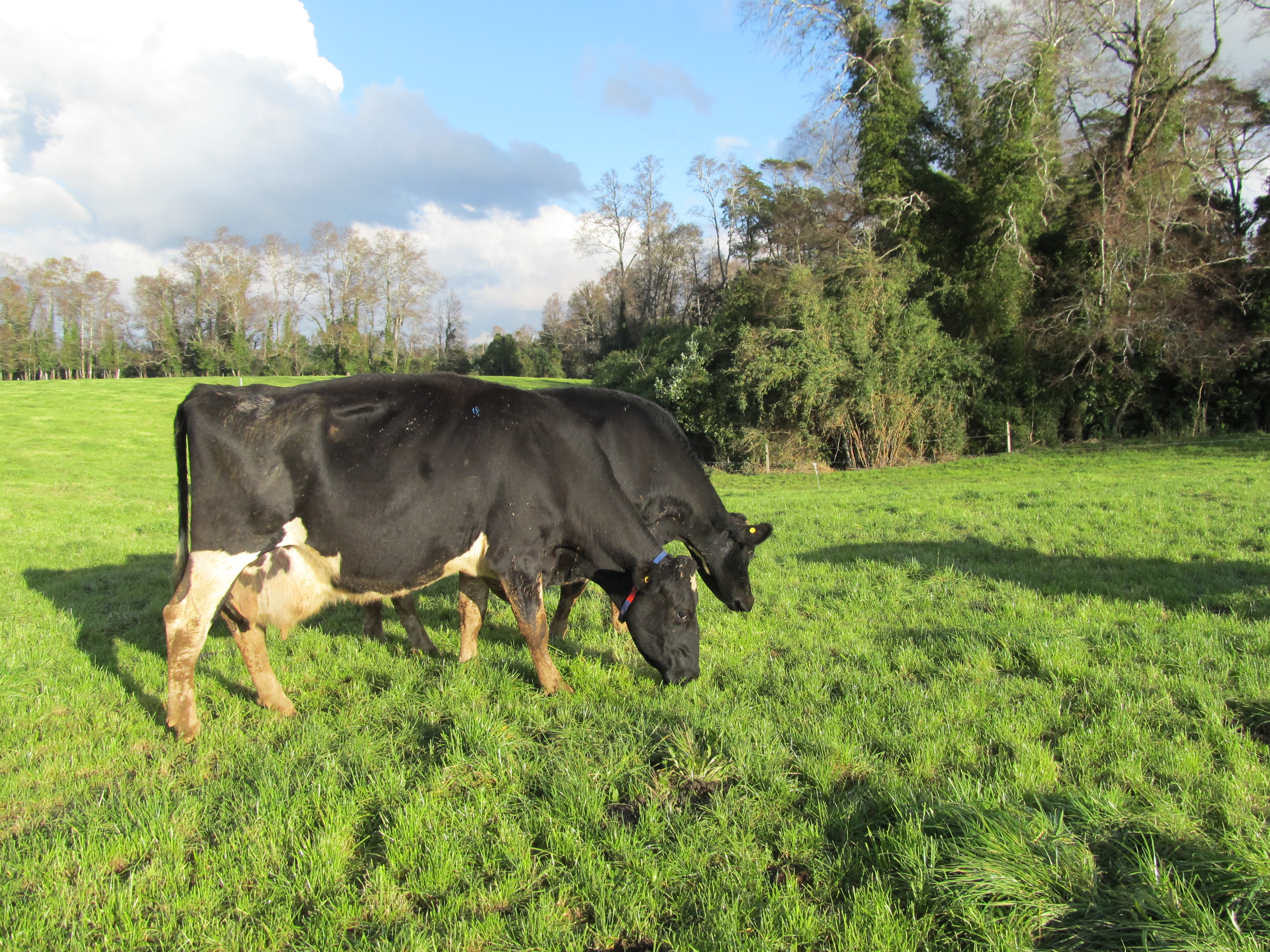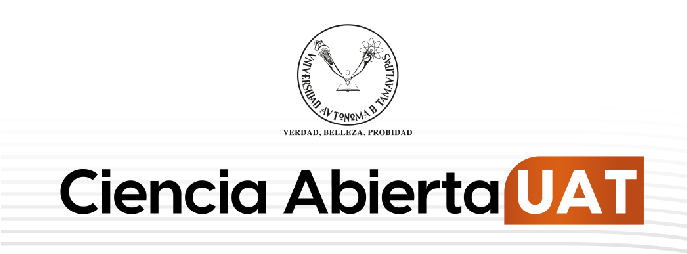Evaluation of rumen fermentation in autumn grazing dairy cows using rumen fluid samples obtained by rumenocentesis
DOI:
https://doi.org/10.29059/cvpa.v1i2.19Keywords:
VFAs, N-NH3, grazing, rumen, dairy cowsAbstract
To evaluate rumen parameters of fermentation, less invasive techniques such as rumenocentesis are preferred. This method was used to evaluate the pH, concentration of NH3-N, and volatile fatty acids (VFAs) in dairy cows. The cows were grazing on two pasture allowances (17 and 25 kg MS/cow/day) and receiving either grass silage (PS) or corn silage (CS) (at a rate of 6.2 kg DM/cow/day). The results showed that including corn silage in the diet compared to grass silage caused changes in rumen pH (p < 0.05). However, there were no significant changes in the concentrations of NH3-N and VFA due to the effect of the pasture supply or type of silage in the diet. In conclusion, rumenocentesis is a less invasive technique that can be used to compare diets of dairy cows. The analysis of rumen samples obtained by rumenocentesis showed that corn silage decreased rumen pH with a higher ratio of glucogenic acids.
References
Association of Official Analytical Chemists. (1985). Official methods of analysis of the aoac (13a ed.). Association of Official Analytical Chemist.
Albarrán-Portillo, B., López-González, F., Ruiz-Albarrán, M., & Arriaga-Jordán, C. M. (2019). Respuesta productiva y económica a la suplementación con concentrados de vacas lecherasen pastoreo con alta carga animal. Revista Mexicana de Ciencias Pecuarias, 10(4), 855-869. https://doi.org/10.22319/rmcp.v10i4.4787
Bal, M. A., Shaver, R. D., Jirovec, A. G., Shinners, K. J., & Coors, J. G. (2000). Crop processingand chop length of corn silage: effects on intake, digestion, and milk production by dairy cows.Journal of Dairy Science, 83(6), 1264-1273. https://doi.org/10.3168/jds.S0022-0302(00)74993-9
Batistel, F., de Souza, J., Vaz Pires, A., & Santos, F. A. P. (2021). Feeding grazing dairy cows withdifferent energy sources on recovery of human-edible nutrients in milk and environmental impact.Frontiers in Sustainable Food Systems, 5, 642265. https://doi.org/10.3389/fsufs.2021.642265
Beltrán, I., Ruiz-Albarrán, M., Von Stillfried, N., Balocchi, O., Wittwer, F., & Pulido, R. G. (2021).The timing of pasture allocation and grass silage supplementation affect pasture intake, milkproduction and nitrogen partitioning of dairy cows. Spanish Journal of Agricultural Research,19(2). https://doi.org/10.5424/sjar/2021192-16264
Gianesella, M., Morgante, M., Stelletta, C., Ravarotto, L., Giudice, E., & Van Saun, R. J. (2010).Evaluating the effects of rumenocentesis on health and performance in dairy cows. ActaVeterinaria Brno, 79(3), 459-468. https://doi.org/10.2754/avb201079030459
Gregorini, P. (2012). Diurnal grazing pattern: its physiological basis and strategic management.Animal Production Science, 52(7), 416-430. https://doi.org/10.1071/AN11250
Habib, M., Syed, J. S., & Leaver, J. D. (2006). Choice of grass or maize silages by lactating dairycows: influence of supplementary protein, concentrate level and milk yield. Animal Science,82(04), 469-477. https://doi.org/10.1079/asc200651
Hall, M. B., & Huntington, G. B. (2008). Nutrient synchrony: Sound in theory, elusive in practice. Journal of Animal Science, 86 (suppl. 14), E287-E292. https://doi.org/10.2527/jas.2007-0516
Keim, J. P., López, I. F., & Balocchi, O. A. (2015). Sward herbage accumulation and nutritive valueas affected by pasture renovation strategy. Grass and Forage Science, 70(2), 283-295. https://doi.org/10.1111/gfs.12115
Keim, J. P., López, I. F., & Berthiaume, R. (2014). Nutritive value, in vitro fermentation and methaneproduction of perennial pastures as affected by botanical composition over a growing season in the south of Chile. Animal Production Science, 54(5), 598. https://doi.org/10.1071/an13026
Kennedy, E., Curran, J., Mayes, B., Mcevoy, M., Murphy, J. P., & Odonovan, M. (2011). Restrictingdairy cow access time to pasture in early lactation: the effects on milk production, grazing behaviorand dry matter intake. Animal, 5(11), 1805-1813. https://doi.org/10.1017/s1751731111000826
McEvoy, M., Delaby, L., Murphy, J. P., Boland, T. M., & O’Donovan, M. (2010). Effect of herbagemass and allowance on sward characteristics, milk production, intake and rumen volatile fatty acid concentration. Grass and Forage Science, 65(3), 335-347. https://doi.org/10.1111/j.1365-2494.2010.00752.x
Morales, Á., Grob, D., Balocchi, O., & Pulido, R. (2014). Productive and metabolic response to twolevels of corn silage supplementation in grazing dairy cows in early lactation during autumn.Chilean Journal of Agricultural Research, 74(2), 205-212. https://doi.org/10.4067/S0718-58392014000200012
Muñoz, C., Hube, S., Morales, J. M., Yan, T., & Ungerfeld, E. M. (2015). Effects of concentratesupplementation on enteric methane emissions and milk production of grazing dairy cows. Livestock Science, 175, 37-46. https://doi.org/10.1016/j.livsci.2015.02.001
Noro, M., Sepúlveda, P., Cárdenas, F., Chihuailaf, R. H., & Wittwer, F. (2013). Dorsomedial rumenocentesis:a safe procedure for collecting ruminal fluid samples from grazing dairy cows. Archivos deMedicina Veterinaria, 45(1), 25-31. http://dx.doi.org/10.4067/S0301-732X2013000100005
Pérez-Prieto, L. A., & Delagarde, R. (2013). Meta-analysis of the effect of pasture allowance onpasture intake, milk production, and grazing behavior of dairy cows grazing temperate grasslands. Journal of Dairy Science, 96(10), 6671-6689. https://doi.org/10.3168/jds.2013-6964
Peyraud, J. L., & Delagarde, R. (2013). Managing variations in dairy cow nutrient supply under grazing. Animal, 7 (suppl. 1), 57-67. https://doi.org/10.1017/S1751731111002394
Phillips, C. (2023). The encyclopedia of animal nutrition (2da. ed.) CABI. https://doi.org/10.1079/9781789247282.0001
Ruiz-Albarrán, M., Balocchi, O. A., Noro, M., Wittwer, F., & Pulido, R. G. (2012). Effect of increasingpasture allowance and grass silage on animal performance, grazing behaviour and rumen fermentation parameters of dairy cows in early lactation during autumn. Livestock Science, 150(1-3), 407-413. https://doi.org/10.1016/J.LIVSCI.2012.09.023
Ruiz‐Albarrán, M., Balocchi, O. A., Noro, M., Wittwer, F., & Pulido, R. G. (2016). Effect of thetype of silage on milk yield, intake and rumen metabolism of dairy cows grazing swardswith low herbage mass. Animal Science Journal, 87(7), 878-884. https://doi.org/10.1111/asj.12513
Sotelo, J., Noro, M., Wittwer, F., Smulders, J. P., & Pulido, R. G. (2012). Evaluación de la ofertade pradera y tipo de concentrado sobre algunos parámetros ruminales en vacas lecherasen pastoreo otoñal. Archivos de Medicina Veterinaria, 44(2), 167-172. http://dx.doi.org/10.4067/S0301-732X2012000200010
Tilley, J. M. A., & Terry, D. R. (1963). A two‐stage technique for the in vitro digestion of forage crops. Grass and Forage Science, 18(2), 104-111. https://doi.org/10.1111/J.1365-2494.1963. TB00335.X
Vargas, J., Ungerfeld, E., Muñoz, C., & DiLorenzo, N. (2022). Feeding strategies to mitigate entericmethane emission from ruminants in grassland systems. Animals, 12(9), 1132. https://doi.org/10.3390/ani12091132
Wilkinson, J. M., Lee, M. R., Rivero, M. J., & Chamberlain, A. T. (2020). Some challenges and opportunities for grazing dairy cows on temperate pastures. Grass and Forage Science, 75(1),1-17. https://doi.org/10.1111/gfs.12458
Wims, C. M., Deighton, M. H., Lewis, E., O’loughlin, B., Delaby, L., Boland, T. M., & O’donovan, M. (2010). Effect of pregrazing herbage mass on methane production, dry matter intake,and milk production of grazing dairy cows during the mid-season period. Journal of Dairy Science, 93(10), 4976-4985. https://doi.org/10.3168/jds.2010-3245
Wittwer, F. (2021). Manual de patología clínica veterinaria. Ediciones Universidad Austral de Chile.

Published
How to Cite
Issue
Section
License
Copyright (c) 2024 Ciencias Veterinarias y Producción Animal

This work is licensed under a Creative Commons Attribution-NonCommercial-ShareAlike 4.0 International License.
Accepted 2024-01-31
Published 2024-01-31







